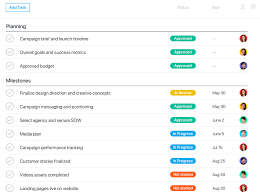Exploring the Evolving Landscape of Modern Technology
The Impact of Technology on Modern Society
Technology has become an integral part of our daily lives, shaping the way we communicate, work, and interact with the world around us. From the invention of the wheel to the latest advancements in artificial intelligence, technology has continually transformed society and revolutionised how we live.
One of the most significant impacts of technology is its role in enhancing communication. With the advent of smartphones, social media platforms, and instant messaging services, people can now connect with others across the globe in real-time. This interconnectedness has not only bridged geographical barriers but has also facilitated the exchange of ideas and information on an unprecedented scale.
Furthermore, technology has revolutionised various industries, driving innovation and efficiency. From automation in manufacturing to data analytics in healthcare, technological advancements have streamlined processes and improved productivity. The rise of e-commerce platforms has also transformed the way we shop and conduct business, offering convenience and accessibility to consumers worldwide.
In addition to its economic impact, technology has also played a crucial role in education and learning. Online learning platforms have made education more accessible to individuals regardless of their location or circumstances. Virtual reality simulations and interactive tools have enhanced learning experiences and provided new avenues for exploration and discovery.
However, along with its numerous benefits, technology also presents challenges such as privacy concerns, cybersecurity threats, and digital divides. As society becomes increasingly reliant on technology, it is essential to address these issues proactively to ensure a safe and equitable digital future for all.
In conclusion, technology continues to shape our world in profound ways, offering limitless possibilities for innovation and growth. By harnessing the power of technology responsibly and ethically, we can create a future that is inclusive, sustainable, and built on the foundations of progress.
Essential Technology Tips: Boost Your Security and Privacy Online
- Regularly update your devices and software to ensure they have the latest security patches.
- Use strong, unique passwords for each of your online accounts to enhance security.
- Be cautious when clicking on links or downloading attachments in emails from unknown sources to avoid phishing attacks.
- Back up your important data regularly to prevent loss in case of hardware failure or cyber attacks.
- Enable two-factor authentication whenever possible for an extra layer of security on your accounts.
- Limit the personal information you share online to protect your privacy and reduce the risk of identity theft.
- Educate yourself about common online scams and stay vigilant to avoid falling victim to them.
- Adjust privacy settings on social media platforms to control who can see your posts and personal information.
- Disconnect or cover up webcams when not in use to prevent unauthorized access.
Regularly update your devices and software to ensure they have the latest security patches.
It is crucial to regularly update your devices and software to ensure they have the latest security patches. By keeping your technology up-to-date, you can protect yourself from potential cyber threats and vulnerabilities that could compromise your data and privacy. Updates often contain fixes for known security issues, so staying current with these patches is an essential step in maintaining the security of your devices and safeguarding your digital information.
Use strong, unique passwords for each of your online accounts to enhance security.
In the digital age, safeguarding your online accounts is paramount, and one effective measure to enhance security is to utilise strong, unique passwords for each account. By creating complex passwords that are not easily guessed and using a different password for each online platform, you significantly reduce the risk of unauthorised access to your sensitive information. This simple yet crucial practice adds an extra layer of protection to your digital presence, helping to safeguard your personal data and maintain the integrity of your online accounts.
Be cautious when clicking on links or downloading attachments in emails from unknown sources to avoid phishing attacks.
It is crucial to exercise caution when interacting with emails from unfamiliar sources by refraining from clicking on links or downloading attachments. This practice helps mitigate the risk of falling victim to phishing attacks, where malicious actors attempt to deceive individuals into divulging sensitive information or installing harmful software. By remaining vigilant and verifying the legitimacy of email sources before taking any action, users can safeguard themselves against potential cyber threats and protect their personal data from being compromised.
Back up your important data regularly to prevent loss in case of hardware failure or cyber attacks.
It is crucial to back up your important data regularly as a preventive measure against potential loss due to hardware failure or cyber attacks. By creating backups of your files and information on external drives, cloud storage services, or other secure platforms, you can safeguard your valuable data and ensure that it remains accessible even in the event of unforeseen circumstances. Regular backups provide peace of mind and serve as a reliable safety net to protect against data loss, allowing you to mitigate the impact of any unexpected incidents effectively.
Enable two-factor authentication whenever possible for an extra layer of security on your accounts.
To enhance the security of your online accounts, it is advisable to enable two-factor authentication whenever feasible. This additional layer of security requires not only a password but also a secondary verification method, such as a code sent to your mobile device or generated by an authenticator app. By implementing two-factor authentication, you significantly reduce the risk of unauthorised access to your accounts, adding an extra barrier that strengthens the protection of your sensitive information and personal data.
Limit the personal information you share online to protect your privacy and reduce the risk of identity theft.
In an age where online presence is prevalent, it is crucial to exercise caution and limit the personal information you share on the internet. By safeguarding your privacy and being mindful of the data you disclose, you can reduce the risk of identity theft and protect yourself from potential cyber threats. Remember that once information is shared online, it can be challenging to control its dissemination. Therefore, prioritising privacy and practising digital hygiene are essential steps in maintaining a secure online presence.
Educate yourself about common online scams and stay vigilant to avoid falling victim to them.
It is crucial to educate oneself about prevalent online scams and remain vigilant to prevent becoming a victim of cyber fraud. By staying informed about common tactics used by scammers, such as phishing emails, fake websites, and social engineering techniques, individuals can better protect their personal information and financial assets. Being cautious and verifying the authenticity of online communications and transactions can help mitigate the risk of falling prey to cybercriminals. Stay informed, stay vigilant, and stay safe in the digital landscape.
Adjust privacy settings on social media platforms to control who can see your posts and personal information.
It is essential to adjust privacy settings on social media platforms to have control over who can view your posts and access your personal information. By customising these settings, you can ensure that your online presence is secure and that only trusted individuals have access to your content. Protecting your privacy in the digital age is paramount, and taking proactive steps to manage your online visibility can help safeguard your personal data from potential threats or misuse.
Disconnect or cover up webcams when not in use to prevent unauthorized access.
To enhance your online security and protect your privacy, it is advisable to disconnect or cover up webcams when not in use. This simple yet effective precaution can prevent unauthorized access and potential breaches of your personal space. By taking this proactive step, you can mitigate the risk of cyber intrusions and safeguard your digital presence from prying eyes. It is important to remain vigilant in the digital age and implement such measures to ensure a safer online experience.












